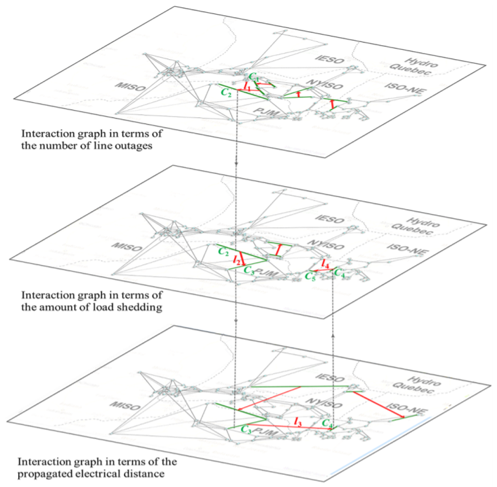Project Details

Cascading outage is a major threat to grid operations, which usually involves a long chain of events, including faults, equipment failures, protection actions, etc. Also, uncertainties in real-time operations influence the outage propagation and the outcome. Grid operators need to beware of possible cascading outage patterns in real time in order to take effective remedial actions such as intelligent load shedding to avoid under-voltage or under-frequency issues, and adaptive islanding to isolate an outage area. Power system simulations leveraged by High Performance Computing (HPC) may enable fast simulation and analysis of detailed outage propagation and dynamics of the grid under potential for cascading outages. However, once cascading outages initiate and start propagating to wide areas, real-time mitigation of outages can no longer rely on power system simulation due to the very limited time available for operators to make a decision. A more effective approach is to directly predict the propagation patterns of outages and estimate likely consequences in real time using an operational model based on the key patterns of cascading outages, e.g. interactions between key component failures. Such a model can be constructed off-line by data analytics of large number of simulations of cascading outages generated by HPC, and data from historical records of cascading events.
We propose to develop multi-layer interaction graph operational model for real-time remedial actions including intelligent load shedding and adaptive loading. As illustrated by Fig. 1, the model has multiple layers on different perspectives of cascading outages, e.g. the number of line outages, the amount of load shedding and the electrical distance on outage propagation. Each layer of the model is a graph made of key intra-layer links and components contributing the most to outage propagation of one selected perspective. The key inter-layer links between different layers are also defined to model the transition from one type of consequences to another type. For example, in an early stage of cascading outages, the layer on the line outages is the most important for predicting the propagation path, while in the late stage, the layers on load shedding and outage propagation distances become critical for mitigation actions. The key intra-layer links and key inter-layer links together constitute a comprehensive dynamic model for the dominant outage propagation patterns. The multi-layer interaction graph can be trained by offline database of historical data, and HPC-generated large set of computational simulations of the cascading events to derive information on propagation paths and distances of outages and possible losses of load.
Online mitigation strategies can then be derived directly from the multi-layer interaction graph. The intra- and inter-layer links in the graph represent the interactions among system elements that contribute to the propagation of outages. Thus, cascading outages can be effectively mitigated by weakening or eliminating the corresponding links in the graph. Possible mitigation options include applying cost-effective load shedding to relieve the overloading on the elements corresponding to those key links, or initiating active islanding and isolating the area of outages to effectively stop their propagation. A multi-layer interaction graph can be used for efficient mitigation of cascading outages in the real-time operation environment. It significantly reduces unnecessary analyses when time is extremely limited and provides a model for decision making.
Project Tasks:
- Develop data analytics algorithms for constructing a multi-layer interaction graph from HPC-simulated cascading events and historical data.
- Study mitigation strategies of intelligent load shedding and adaptive islanding based on the interaction graph.
- Develop a testbed system based on the Eastern Interconnection model for HPC generation of the database of cascading events. Develop models for protection actions to enable simulation of realistic cascading events.
- Integrate the multi-layer interaction graph with parallel power system simulation on HPCs for construction and updating of the graph.


